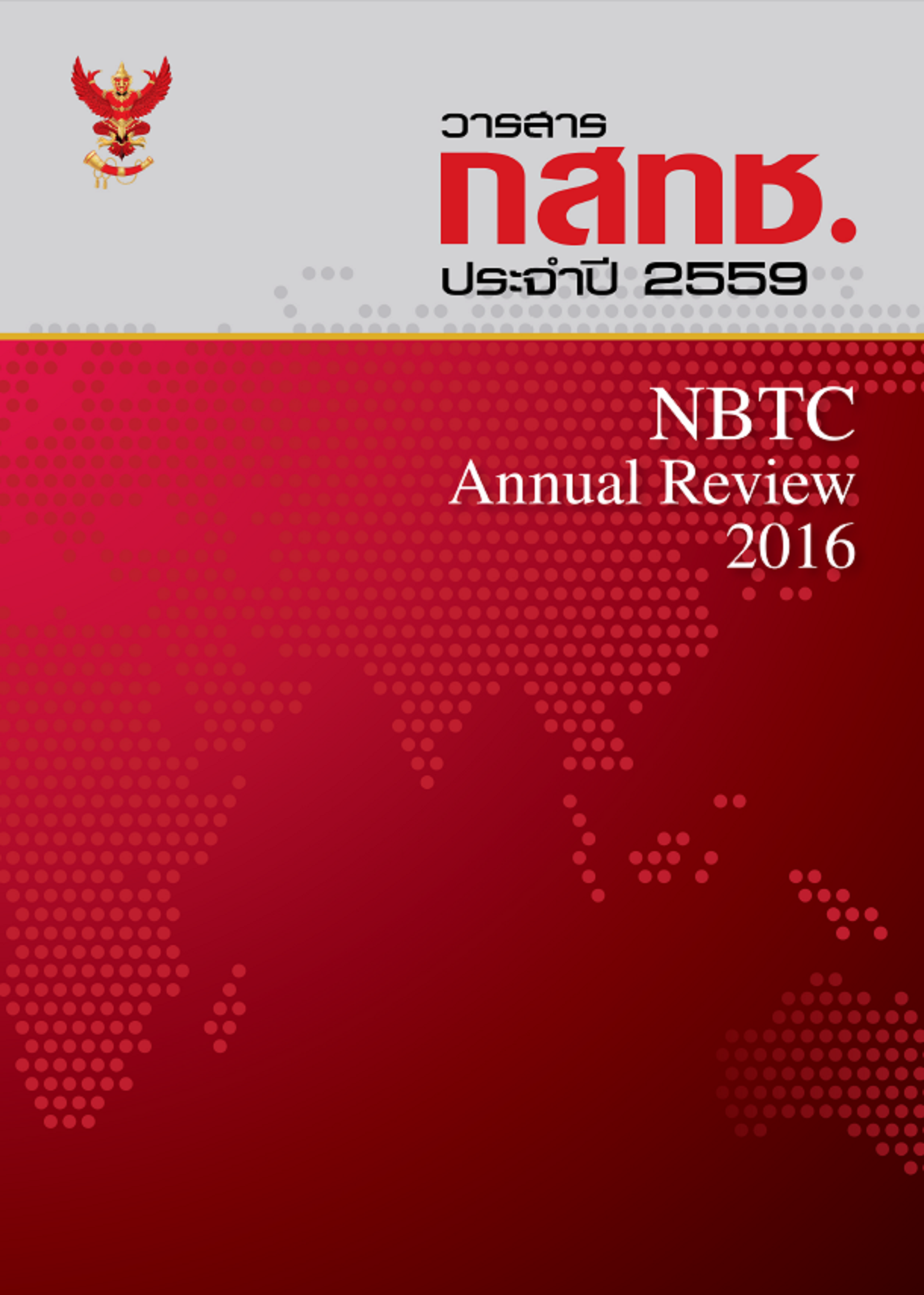Empirical Analysis of Prepaid and Postpaid Mobile Subscription in Thailand
Keywords:
โทรศัพท์เคลื่อนที่, รายเดือน, เติมเงิน กสทช., แบบจำลองโลจิตAbstract
This paper analyzed the determinate of prepaid and postpaid mobile phone subscription in Thailand using logit model to explore the relationship between subscription type and social and economic characteristics. The data used in this analysis relied on consumer behavior survey in 2014 done by NBTC. The results showed that there is a statistically significant relationship between subscription choice and dependent variables. It is found that source of income play important role on choosing mobile payment method. The people who have stable income (such as salary income) tend to subscribe postpaid mobile payment method more than the people who have not. Other variable such as monthly expenditure on mobile service, income level and education level still impact on consumer decision. In Thailand situation, it quit hard to move consumer from prepaid to postpaid subscription to gain more efficiency from effective SIM registration if Thai labors still have uncertainty income. However, in mobile operator point of view, there is a huge opportunity to gain more profit from switching prepaid subscriber to postpaid subscriber by design service package or promotion targeting on the consumer who has stable income.
References
BIRKE, D. (2009). The economics of networks: a survey of the empirical literature. Journal of Economic Surveys,
(4), pp. 762-793.
Çetinkaya, M., BAŞARAN, A. A., & Bağdadioğlu, N. (2014). Empirical analysis of pre-paid and post-paid mobile
subscription in Turkey. Doğuş Üniversitesi Dergisi, 15(2), 211-222.
FARRELL, J., KLEMPERER, P. (2007). Coordination and lock-in: competition with switching costs and network effects.
In M. Armstrong, R. Porter (ed.), Handbook of Industrial Organization, North Holland-Elsevier BV., Netherlands,
pp. 1967-2072.
GSMA (2013). The Mandatory Registration of Prepaid SIM Card Users White Paper. GSMA, United Kingdom.
IDC Thailand (2015) ICT Spending Growth will be Weaker than Usual...But Analyst Firm Points to Signs of Recovery
and a New Era of Thai ICT by 2016 สืบค้นจาก https://www .idc.com/getdoc.jsp?containerId=prTH25800815 (วันที่
มิถุนายน 2559)
LONG, J. S., FREESE, J. (2001). Regression models for categorical dependent variables using STATA. USA:
Stata Corporation.
MAICAS, J. P., SESE, F. J. (2011). Network effects in the mobile communications industry: an overview. In J. P.
MAICAS (ed.), Recent Developments in the Mobile Communications Industry: A Multidisciplinary Approach.
Crotia: InTech, pp. 131-140.
Menezes, R., & Portela, S. (2009). A Logit Model of Customer Churn as a Way to Improve the Customer Retention
Strategy in the Fixed Telecommunications Industry in Portugal. In Australian and New Zealand Marketing
Academy Conference. Melbourne, Australia.
SHY, O. (2011). A short survey of network economics. Review of Industrial Organization, 38 (2), pp. 119-149.
สำนักงานคณะกรรมการกิจการกระจายเสียง กิจการโทรทัศน์ และกิจการโทรคมนาคมแห่งชาติ. (2558). รายงานผลการศึกษาขั้น
สุดท้าย (Final Report) โครงการสำรวจพฤติกรรมการใช้บริการโทรคมนาคมของประชากรไทย พ.ศ. 2557. (3 เมษายน 2558)
กรุงเทพฯ.
สำนักงานคณะกรรมการกิจการโทรคมนาคม. (2553). รายงานฉบับสมบูรณ์โครงการจัดทำหนังสือที่เกี่ยวกับกิจการโทรคมนาคม
และวิทยุโทรทัศน์ ในยุคหลอมรวมสื่อและเทคโนโลยี Convergence.
สำนักงานคณะกรรมการพัฒนาการเศรษฐกิจและสังคมแห่งชาติ. (2559). ข่าวเศรษฐกิจและสังคม: เศรษฐกิจไทยไตรมาสแรกของ
ปี 2559 และแนวโน้มปี2559. สืบค้นจาก https://www.nesdb.go.th/ nesdb _th/ewt_dl_link. php?nid=5164 (วันที่ 30
มิถุนายน 2559)
Downloads
Published
How to Cite
Issue
Section
License
The Office of the NBTC holds the copyright of articles appearing in the journal. The Office of the NBTC allows the public or individuals to distribute, copy, or republish the work under a Creative Commons license (CC), with attribution (BY), No Derivatives (ND) and NonCommercial (NC); unless written permission is received from the Office of the NBTC.
Text, tables, and figures that appear in articles accepted for publication in this journal are personal opinion and responsibility of the author, and not binding on the NBTC and the Office of the NBTC. In case of errors, each author is solely responsible for their own article, and not concerning the NBTC and the NBTC Office in any way.



